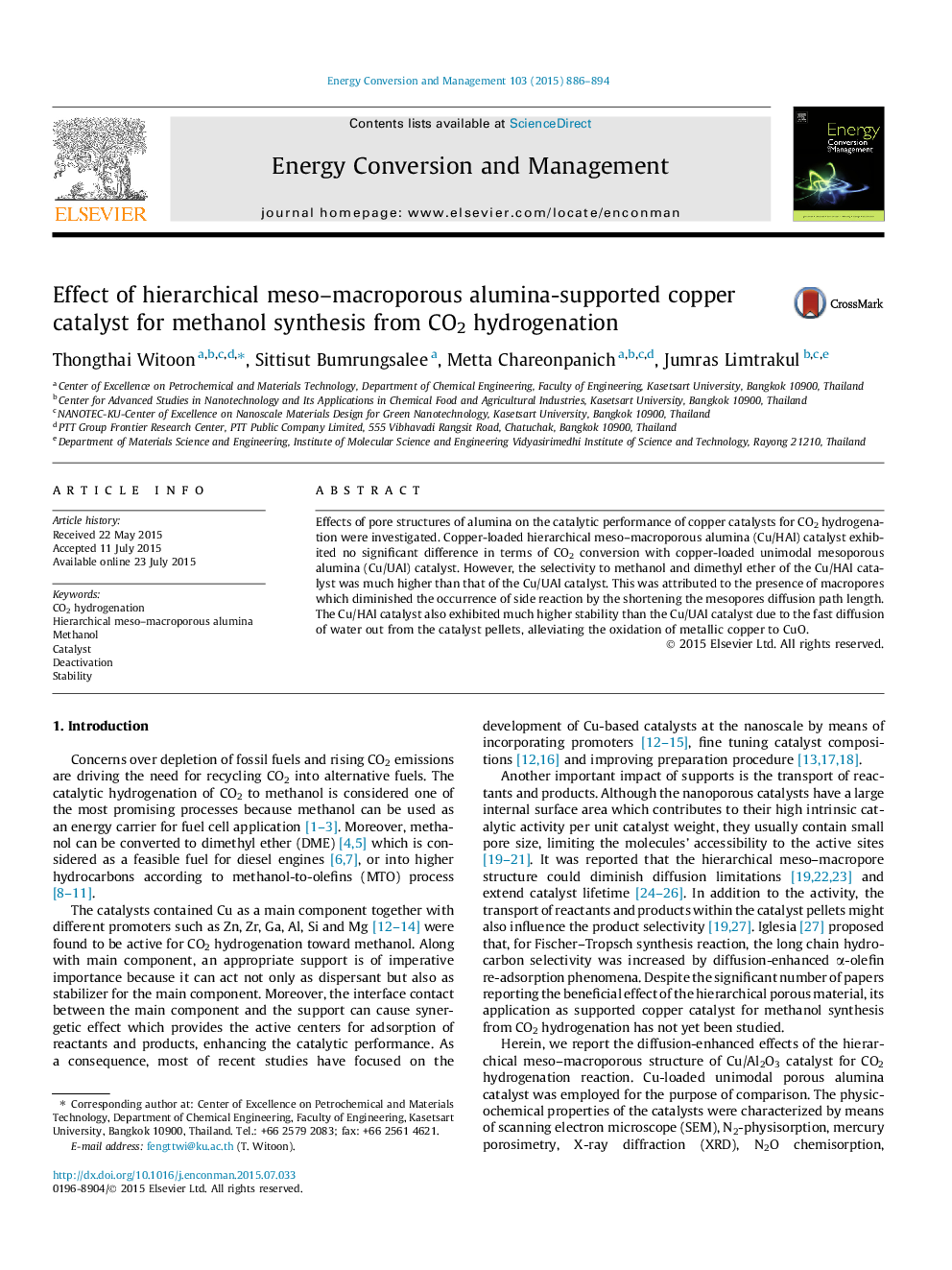| Article ID | Journal | Published Year | Pages | File Type |
|---|---|---|---|---|
| 771739 | Energy Conversion and Management | 2015 | 9 Pages |
•CO2 hydrogenation over Cu-loaded unimodal and hierarchical alumina catalysts.•Cu-loaded hierarchical catalyst exhibited higher methanol selectivity and stability.•The presence of macropores reduced the probability of side reaction.
Effects of pore structures of alumina on the catalytic performance of copper catalysts for CO2 hydrogenation were investigated. Copper-loaded hierarchical meso–macroporous alumina (Cu/HAl) catalyst exhibited no significant difference in terms of CO2 conversion with copper-loaded unimodal mesoporous alumina (Cu/UAl) catalyst. However, the selectivity to methanol and dimethyl ether of the Cu/HAl catalyst was much higher than that of the Cu/UAl catalyst. This was attributed to the presence of macropores which diminished the occurrence of side reaction by the shortening the mesopores diffusion path length. The Cu/HAl catalyst also exhibited much higher stability than the Cu/UAl catalyst due to the fast diffusion of water out from the catalyst pellets, alleviating the oxidation of metallic copper to CuO.
Graphical abstractFigure optionsDownload full-size imageDownload as PowerPoint slide
